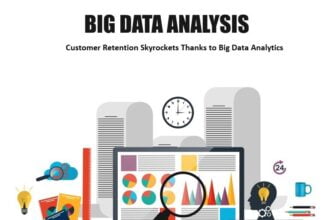
Financial agility is becoming a necessity in the business world, as the world of business continues to evolve and become even more dynamic.
Today, there is rarely an aspect to business that isn’t constantly fluctuating, evolving, and adapting to trends. Business tends to be one giant set of variables, and consistency is a rarity.

Financial agility is becoming a necessity in the business world, as the world of business continues to evolve and become even more dynamic.
Today, there is rarely an aspect to business that isn’t constantly fluctuating, evolving, and adapting to trends. Business tends to be one giant set of variables, and consistency is a rarity.
It’s on account of all these economic and industry variables that Finance teams require a high degree of agility. Whether the cost of oil is increasing or the demand for products is on the decline, Finance teams need to be able to respond immediately to ensure their budgets and plans reflect these shifting circumstances. Here are some tips for building more agility into your budgeting and planning process, so you can increase, adapt, and reallocate resources as needed.
Reduce Reliance on Spreadsheets and Manual Processes
The first step in improving agility is dispensing of the manual processes that are holding your team back. Spreadsheets, while a common method of tackling Finance, are notoriously cumbersome. Not only is all of the work conducted manually, requiring a significant time investment, but it becomes very difficult to scale and improve budgeting process over time. Instead, many organizations are adopting the budgeting and planning applications found in modern, cloud-based EPM software. These solutions can greatly automate the process, reducing manual work, while providing you with a centralized, cloud-based platform to store all financial data and budget variations. Then you can build your budget and compile reports more efficiently while minimizing manual errors. And with most of these solutions, users can continue to leverage Excel as a front-end to the application.
Adopt Dynamic Planning Techniques Like Rolling Forecasts
By this time next quarter, the price of oil could have doubled, the cost of imports and exports could rise, some of your customers may churn, and your business could have added yet another product to its offerings. Nothing about your business remains constant, so your budget can’t either. Basing all of your decisions on an annual budget means you’re operating on static assumptions that will soon become irrelevant, as the drivers of your business change.
A rolling forecast can solve these problems. The rolling forecast can extend to the end of the fiscal year, or beyond, and you can update it regularly to reflect any changes in your industry or business. This allows you to incorporate changes in business conditions as they occur, so your plans and resource allocations are consistently up to date and accurate. It’s with the help of dynamic planning techniques like rolling forecasts that businesses can truly gain the agility needed to respond rapidly to new trends and opportunities.
Move to the Cloud
Cloud-based applications can be an important part of gaining complete financial agility, for small, medium and large enterprises. Finance has never been an isolated department. It relies very closely on the exchange of information from other departments across the enterprise. For the best results, your business needs to have the partnership of multiple departments within the company, exchanging data, collaborating on budgets and forecasts, and measuring performance. This can be made much more efficient with the cloud. Cloud-based applications offer both Finance and line of business managers the ability to access all of the data they need, and to update budgets and forecasts anytime, anywhere – in the office, on the road, or while working from home.
Agility is greatly needed in the world of Finance, and yet many businesses fail to achieve as much financial agility as they are capable of. This is partly due to the pervasive reliance on Excel for budgeting and planning which, despite offering low agility, is still a highly popular method in many organizations. With a cloud-based EPM software platform, your business can streamline the budgeting process, adopt more dynamic techniques such as rolling forecasts, perform what-if scenario modeling – all of which can greatly improve your financial team’s agility.
To learn more, read our white paper titled “Building the Business Case for Cloud-Based Planning and Reporting” and get ready to gain more agility in your 2017 budgeting and planning.







